The entire world was amazed when the French brothers Auguste and Louis Lumière held the first screening of a projected motion picture on 28 December 1895 in Paris. The showcase comprised ten concise films, each unfolding over a span of approximately 50 seconds. News of this groundbreaking occurrence swiftly traversed borders, reaching the metropolis of Istanbul. Theodore Vafiadis, a preeminent photographer within the Ottoman Empire, promptly dispatched a missive to the Lumière Brothers, seeking further elucidation on this innovative marvel. Despite Vafiadis' inquiry, the response he received bore a negative tone. Nevertheless, the denouement foretold a swift assimilation of cinema into the fabric of the Ottoman Empire.
In the year 1897, Jean Alexandre Promio, a cinematographer in the employ of the Lumière brothers, made his way to Istanbul. His mission was to capture a series of scenes, including a vignette unfolding on a boat navigating the waters of the Golden Horn. Promio's footsteps were followed by other cinematographers of note – Felix Mesguich, Francis Doublier, Charles Moisson, and Maurice Perrigot.
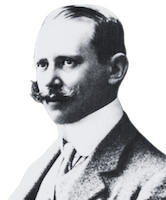
The inaugural film screening within the realms of Istanbul transpired within the confines of Yıldız Palace, exclusively for the discerning gaze of the Sultan. Subsequently, a public screening materialised at Sponeck, the venerable beer hall in the Ottoman capital. Orchestrating this cinematic revelation was Sigmund Weinberg, a representative of the Pathé Fréres company, whose origins traced back to Romania and birthright to the Jewish faith.
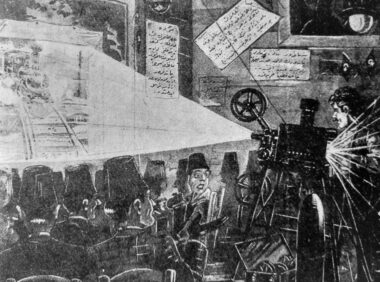
The fervour within the audience during this firs tever screening of a motion picture is immortalised by Ercüment Ekrem Talu's recollection of the event: "A station somewhere in Europe. A locomotive, spewing thick black smoke from its chimney, stands with attached wagons behind. On the platform, people are bustling back and forth in a hurried manner. Oh, what a commotion! You would think they were all seized by a frenzy. The movements are so fast, unmeasured, and strange. The train departed. Of course, quietly and without a sound. Oh my God! It's coming towards us. There was a stir in the dungeon-like hall. Those who feared the train leaping from the screen and crushing the spectators probably left their places cautiously. Well, I wasn't without fear either, but curiosity prevailed and nailed me to my seat. Thank goodness, the train passed quickly and left. They took a two-minute break. This time, we are watching a bullfight." The inaugural screening at Sponeck laid the foundation for a subsequent presentation, unfurling at a coffee house nestled in the Şehzadebaşı district of Istanbul.
Cinema in Istanbul
It would take until 1908 for a permanent movie theater to be opened in Istanbul. Sultan Abdülhamit, gripped by paranoia and an aversion to electricity, had forestalled such establishments, harboring a fear of assassination. The cinematic epoch finally dawned after the restoration of constitutional rule, with Sigmund Weinberg inaugurating the Empire's inaugural movie theatre – Pathé Sineması, nestled in the Tepebaşı district of Istanbul, where the TRT studios now stand.
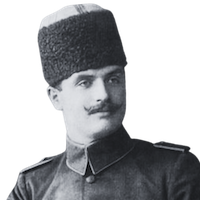
Among the theatre's regular patrons was a young enthusiast named Fuat Efendi (Uzkınay), employed at the physics lab of Galatasaray Lycée. His fervor for cinematography led him to the projection booth, where, captivated by moving images, he swiftly mastered the art of screening footages. Collaborating with Şakir Efendi (Seden), a history teacher at his school, they embarked on organizing screenings at Galatasaray Lycée.
The year 1914 marked the Ottoman Empire's entry into the First World War, prompting a recognition of the need for propaganda to rally public support. The initial stride involved the demolition of the Russian monument in San Stefano (Ayastefanos; present-day Yeşilköy), erected during the Turco-Russian War of 1876-77. The entire event was to be captured on film for widespread dissemination. Initially, an Austrian company was tasked with this cinematic endeavor, but a patriotic resolve later dictated that a Turk should immortalize this historic moment on film.
The task was given to Fuat Efendi, then serving as a reserve officer under arms. His expertise lay in the realm of film screening, yet he faced a challenge – the art of capturing moving images on film eluded him. According to several film historians, it was Austrian experts who imparted the necessary knowledge to Fuat Efendi. On 14 November, 1914, armed with newfound skills, he turned his camera towards the Russian monument, standing 15 meters from the impending demolition. What transpired on that historic day was encapsulated in a 150-meter-long film titled "Ayastefanos Abidesinin Yıkılışı" – the inaugural motion picture shot by a Turk in Turkey.

Yet, a shadow of uncertainty lingers over the authenticity of this claim. The film in question, Ayastefanos Abidesinin Yıkılışı, vanished shortly after its creation, leaving room for doubt about its very existence. There emerged various theories surrounding the events of 14 November 1914. One glaring issue with the detailed account is the possibility that the demolition was a spontaneous occurrence, rather than a meticulously planned event. In such a scenario, organizing a film shoot would have been a logistical challenge. However, this raises the enigma of photographs documenting every stage of the demolition process.
Some suggest that Fuat Efendi may have faltered in operating the camera, choosing instead to feign the filming process to avert the displeasure of his superiors. Alternatively, it is posited that the film was indeed shot, only to succumb to theft or loss. Regardless of the uncertainties surrounding that fateful day, Fuat Efendi remains entrenched in history as the trailblazer of Turkish cinema, his role undiminished by the veils of ambiguity.
War and Propaganda
In 1915, during a visit to Germany, the Minister of War, Enver Pasha, encountered the persuasive power of film. It was not an artistic pursuit but a response to the exigencies of war. The German Army, with its propaganda objectives, exhibited reels of footage for both indoctrination and instructional purposes. A notable piece captured Enver Pasha's visit to a German shooting range.
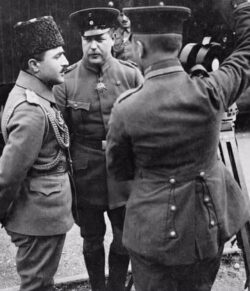
Impressed by the potential impact of this visual medium, Enver Pasha mandated the creation of a cinematography branch within the Ottoman Army, mirroring the German model. Thus, the Central Army Cinematography Office (Merkez Ordu Sinema Dairesi) emerged in 1915. Sigmund Weinberg assumed the directorial reins, aided by Fuat Efendi as the assistant director, and collaborators Mazhar Efendi (Yalay) and Cemil Efendi (Filmer).
The office's mandate, outlined in its statute, encompassed the production and screening of footage covering various facets: operations of army units at the front, significant events, activities in military factories, instructions on new weaponry from allied nations, and military maneuvers.
In its earlier stages, the Central Army Cinematography Office ventured beyond its primary role in military propaganda. Some of the first footages were titled Enver Paşa’nın Atları (Enver Pasha’s Horses) and Enver Paşa’nın Eşi Naciye Sultan’ın Yeni Doğan Çocuğu (The Newly Born Child of Enver Pasha’s Wife Naciye Sultan). These initial forays still proved invaluable, as through them, Weinberg and Fuat Efendi honed their skills in the art of motion picture capture.
The Central Army Cinematography Office was dissolved in 1918. Yet, in its brief existence, it crafted a noteworthy array of documentaries and newsreels, predominantly employing camera gear sourced from Germany and Austria. These films served not only as motivational tools for soldiers but found their way onto the public stage. A dedicated theatre emerged within the military museum nestled in Hagia Sophia, known as Müze-i Askeri Sineması. Among the Office's productions, a glimpse at some includes:
1915
- Anafartalar Muharebelerinde İtilaf Ordularının Püskürtülmesi (Repulsing the Enemy Armies During the Battles of Anafartalar)
- Harbiye Nazırının Kıta Teftişi ve Batum Manzarası (Troop Inspection by the Minister of War and Scenery from Batumi)
1916
- Çanakkale Muharebeleri (Battles of Çanakkale)
- General Townshend (General Townshend)
- General Townshend ve Hintli Üsera (General Townshend and Indian Prisoners)
- Von Der Goltz Paşa’nın Cenaze Merasimi (The Funeral of General Von der Goltz)
- Esir İngiliz Generali (Imprisoned British General)
- Galiçya Harekatı (Galician Operations)
- Galiçya Harekatı’nda 19. Süvari Müfrezesi (The 19th Cavalry Division During Galician Operations)
1917
- Alman İmparatoru’nun Dersaadete Gelişi (The German Emperor’s Visit to Istanbul)
- Alman İmparatoru’nun Çanakkale’yi Ziyareti (The German Emperor’s Visit to Çanakkale)
1918
- Abdülhamit’in Cenaze Merasimi (Abdülhamit’s Funeral)
- Sultan Reşat’ın Cenaze Merasimi (The Funeral of Sultan Reşat)
- Vahdettin’in Biat Merasimi (Vahdettin’s Ceremony of Allegiance)
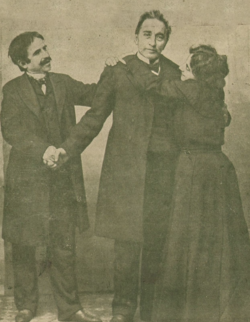
In 1916, the Association of National Defense (Müdâfaa-i Milliye Cemiyeti), established a cinematography branch. Tasked with leadership responsibilities was Kenan Efendi (Erginsoy). Simultaneously, Turkey's cinematic pioneers delved into feature films amid the wartime challenges. Weinberg struck an arrangement with Arshak Benlian's theatre company, initiating the filming of Leblebici Horhor (Horhor the Roasted Chickpea Vendor). However, due to the demise of a key cast member, Weinberg abandoned the project, setting his sights on a fresh endeavour—Himmet Ağa’nın İzdivacı (The Marriage of Himmet Agha).
Regrettably, this second cinematic venture also faced an untimely halt. The majority of actors were called to military service, and Weinberg himself faced dismissal as Romania, his homeland, joined the conflict against the Central Powers. In 1917, Sedat Semavi, working on behalf of the Association of National Defense, successfully produced two feature films: Pençe (The Fang) and Casus (The Spy). Then, in 1918, Fuat Efendi brought closure to Weinberg’s unfinished project, Himmet Ağa’nın İzdivacı.
After the War
The year 1918 saw the conclusion of the war, and as per the armistice resolutions, the Central Army Cinematography Office and the Association of National Defense were obliged to relinquish their cinematography equipment to the occupying forces. Seeking to evade this obligation, the equipment found refuge in the hands of the Veterans’ Association (Malin-i Guzat-ı Askeriye Muavenet Cemiyeti).
Within the realm of the Veterans' Association, unfinished documentaries were given completion, and three feature films emerged. The initial pair, lensed by Ahmet Fehim Efendi in 1919, bore the titles Mürebbiye (The Nanny) and Binnaz (Binnaz). Mürebbiye, an adaptation from Hüseyin Rahmi's highly popular novel, and the theatre play crafted by Ahmet Fehim himself, recounted the tale of a French nanny laboring in Istanbul. Implicitly, the film critiqued the presence of "foreigners" in the Ottoman Empire. This satirical piece promptly raised eyebrows, leading to its prohibition for screening beyond Istanbul. Meanwhile, Binnaz found its inspiration in Victor Hugo’s Marion Delorme, brought to life by Yusuf Ziya Bey (Ortaç).
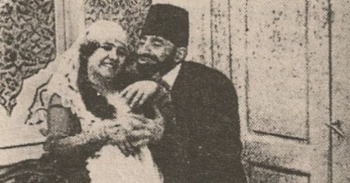
The third feature film from the Veteran’s Association materialized in 1921. Titled Bican Efendi Vekilharç (Bican Efendi the Majordomo), directed by Şadi Fikret Bey (Karagözoğlu), this cinematic endeavour took the form of a comedy. Drawing inspiration from Charlie Chaplin’s Charlot, Bican Efendi’s escapades continued in subsequent short films.
During the War of Liberation, Mustafa Kemal's National Army orchestrated the transfer of cinematography equipment to the newly formed Army Film Shooting Center in Ankara. As the war's conclusion loomed and Greek forces retreated from Anatolia, this centre crafted a documentary titled "İstiklal, İzmir Zaferi" (Liberty, the Victory of Izmir) in 1922. Simultaneously, in this pivotal year, witnessed the birth of the inaugural private film enterprise, Kemal Film. Thus concluded the initial chapter of Turkish cinema, characterized by the dominance of the military in film production during this period.
![]()
Sources consulted:
- Evren, B., “Sigmund Weinberg: Türkiye’ye Sinemayı Getiren Adam” (Sigmund Weinberg: The Man Who Introduced the Cinema to Turkey), Milliyet Yayınları, Istanbul, 1995.
- Evren, B., “İlk Türk Filmleri” (The First Turkish Movies), Es Yayınları, Istanbul, 2006.
- Özön, N., “Türk Sineması Kronolojisi 1895-1966” (A Chronology of Turkish Cinema 1895-1966), Bilgi Yayınevi, Ankara, 1968.
- Şener, E., “Kurtuluş Savaşı ve Sinemamız” (The War of Liberation and Our Cinema), Dizi Yayınları, Istanbul, 1970.
PAGE LAST UPDATED ON 4 JANUARY 2024